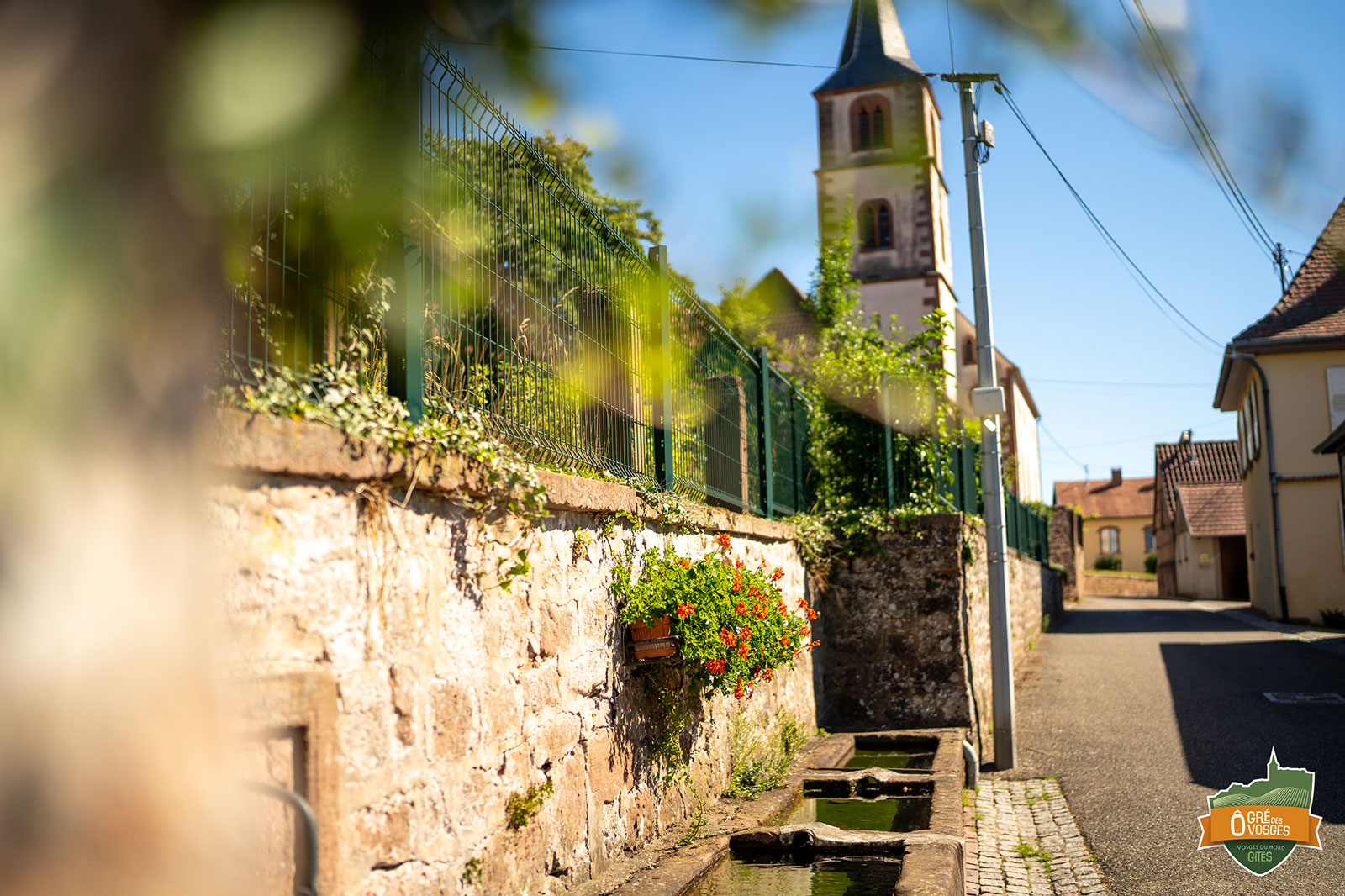
A city of charm
Oberbronn, etymologically «source du haut» is a charming locality located 50kms north-west of Strasbourg is ideally located on the edge of the forest, on the first foothills of the Vosges du Nord, at the foot of the Wasenkoepfel which culminates at more than 500m of altitude.
Labeled «Green Station», in the heart of the Vosges du Nord Regional Park, Oberbronn dominates a harmonious landscape is varied that makes the happiness of walkers, hikers, mountain bikers and nature lovers!
This ancient medieval city, capital of an old Lordship, has retained its original appearance and will seduce you with its beautiful half-timbered houses of the XVI and XVII century with picturesque ornaments, its cobbled streets and its rich architectural and cultural heritage.
Oberbronn history
The first mention of Oberbronn dates back to 1196, evoking a village belonging to the Born, bailiffs of the Lichtenberg. A church was built in 1229. The village passed to the Ochsensteins in 1352, to the Lichtenbergs in 1384, then to the Deux-Ponts-Bitche in 1480, before falling in 1540 to Count Philippe I of Linange-Westerbourg by his marriage with Amélie de Deux-Ponts-Bitche.
Under the administration of the counts, Oberbronn obtained the status of «city» and became the regional center of the seigneurial administration, judicial, in particular by the construction of a court in 1568. The economy grew thanks to the establishment of wine fairs and the development of local crafts. The lords of Linange-Westerbourg were also behind the introduction of the Reformation in 1554 and the construction of the city walls in 1592. After suffering the destruction and epidemics drained by the Thirty Years' War, the attack on the Palatine and the War of the Spanish Succession, Oberbronn experienced a revival of prosperity in the 18th century, its population rising from 500 in 1702 to 1328 in 1781.
Occupied by the Würtembergois troops between 1816 and 1817, the village experienced a crisis with the departure of the latter, which led to that of the merchants while the town of Niederbronn benefited from the passage of the Haguenau – Bitche railway line. The First World War marks the abandonment of viticulture, while the city was partially destroyed during the Allied bombing of March 1945. Today Oberbronn has 1542 inhabitants (figure Insee 2015)
Source: Oberbronn Book
